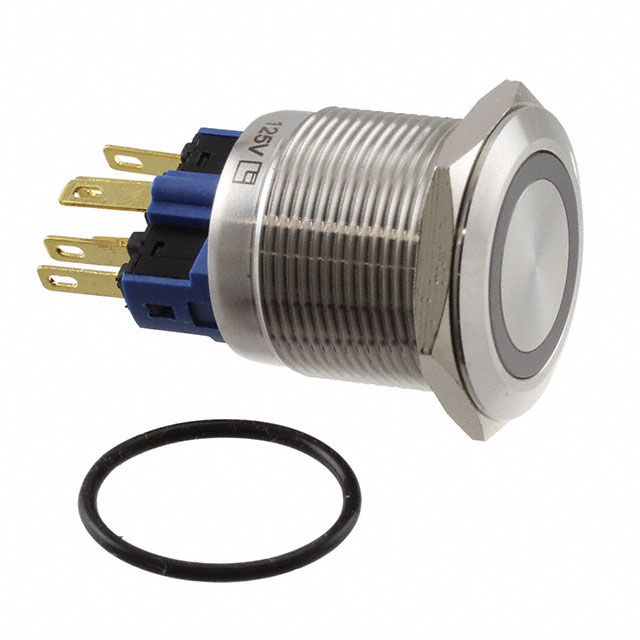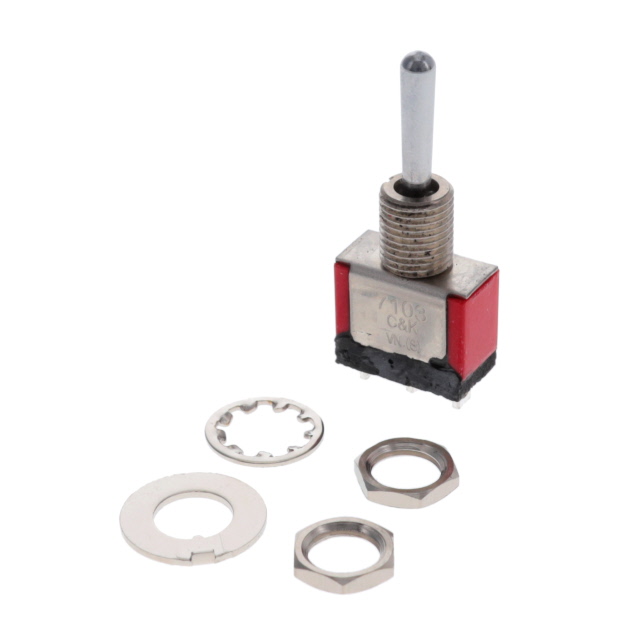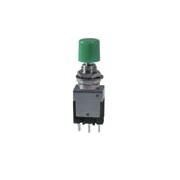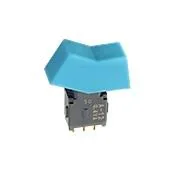
10K Resistor Color Code: A Complete Guide
Global electronic component supplier ERSAELECTRONICS: Rich inventory for one-stop shopping. Inquire easily, and receive fast, customized solutions and quotes.
What is a 10K Resistor?
A basic electrical component with a resistance of 10,000 ohms (10 kilohms) is called a 10K resistor. In electronic circuits, this passive component is essential for regulating voltage levels and current flow. 10K stands for 10,000 ohms since the "K" in 10K stands for "kilo," which is 1,000. Key characteristics of 10K resistors: Ohms of resistance: 10,000; Power ratings: Commonly offered in 1W, 2W, 1/2W, and 1/4W; Tolerance: ±1%, ±2%, and ±5% are typical tolerances; Typically, the temperature coefficient ranges from 50 to 200 ppm/°C.
.jpg?x-oss-process=image/auto-orient,1/quality,q_70/format,webp)
Because of its adaptability and capacity to offer a reasonable balance between voltage drop and current limiting in various circuit designs, 10K resistors are commonly employed.
Quick Reference of Resistor Color Code

Understanding Resistor Color Codes
Three to six bands typically represent resistance, tolerance, and occasionally temperature coefficient of resistance (TCR) on resistor cases. One reads the bands from left to right. Not every time is the reading instruction evident. Sometimes, the tolerance bandwidth is printed 1.5–2 times wider than the other bands in order to indicate the reading direction. There may occasionally be a noticeably wider gap between the tolerance band and the other bands. Since they are never used for important digits, any gold or silver bands that are present must be at the right end. To find the precise resistance value, it is usually preferable to consult the manufacturer's literature or make use of a multimeter.
The first two bands of a three-band resistor stand for the first two significant numbers, while the multiplier is represented by the third band. The tolerance will always be ±20% since there isn't a tolerance band available.
The first two bands of the most popular resistor, a four-band resistor, also correspond to the first two significant digits. The multiplier is represented by the third band. Tolerance is represented by the fourth band.
The first three bands of a five-band resistor correspond to the first three significant digits. The multiplier is represented by the fourth band. Tolerance is represented by the fifth band.
Decoding the 10k Resistor Color Code
Selecting the necessary colors to locate 10K ohm resistors is made easier by consulting the preceding chart. Please refer to the picture of a 10K ohm resistor below for a visual representation. It's vital to remember that the resistor's size affects its power rating, with larger sizes typically denoting higher power ratings. The resistor's body color has no inherent relevance.

The color bars indicate the following details in relation to a 10K ohm resistor:
.png?x-oss-process=image/auto-orient,1/quality,q_70/format,webp)
One digit, represented by the first band in brown, is the same as the second digit, represented by the second band in black, which is 0; The multiplier, or 1000 or 1K, is represented by the third band, which is orange; The tolerance, represented by the gold fourth band, is ±5%. Consequently, the resistance value can be computed using the formula below: (10K ±5% ohm) = (1) (0) (x1000) (±5%).
How to Read a Resistor Color Code?
By analyzing the color bands of a resistor, you may quickly ascertain its value. Printed alphanumeric codes on small resistors were problematic, which led to the valuable creation of color-coding resistors in the early 1920s.
One of the most frequent queries while interpreting the resistor color coding is "where to start." Here are some examples of visual clues that can help you:
Band Grouping: Color bands on resistors are rarely equally spaced. The majority of the time, bands are arranged in a pattern with a space between them. The biggest gap is found before to the tolerance band. This larger group should be placed on the left in order to read the resistor from left to right.
Tolerance Marker: The standard tolerance of a resistor is 5% or 10%. A 5% tolerance is shown by a gold tint, while a 10% tolerance is indicated by a silver color. It's crucial to remember that metallic hues are never the first in resistor color codes. The tolerance values are clearly visible on the resistor's right side. Read the resistor from left to right one more time.
Starting Band: Although it's not a hard and fast rule, the first band is usually the one nearest to the resistor's end. If you are not sure where to start, you can use other hints.
Use a multimeter to identify potential resistance and adjust instructions accordingly to determine which resistance is most likely to be present. The resistor color coding can be read by following these steps:
Every color has a numerical value that indicates the resistance value:

The first two or three bands on the left side are color-coded. After these early bands, we reach the multiplier band, which is indicated by the following color codes:

This multiplies the number from the previous bands by a power of ten. The number from the previous bands is multiplied by each color. To express these multipliers, use the prefixes giga, mega, and kilo. As an alternative, scientific notation can be used to describe tiny values, such as 10 9 (gigaohm). A tolerance band is present on the final color band (4, 5, and 6) for all resistor types. This typically depicts a component resistance normal distribution represented as a percentage:

For resistors with four or five bands, the interpretation colors are the same. The temperature coefficient on 6-band resistors is covered in a different section. There is an additional band on the resistor that shows the temperature coefficient.
How To Read the 10K Resistor Color Code
Resistor color codes consistently comprise digits, a multiplier, and a tolerance value. In the case of a four-band resistor, each band serves a distinct purpose:
| Color | 1st Band (Digit) | 2nd Band (Digit) | 3rd Band (Multiplier) | 4th Band (Tolerance) |
| Black | 0 | 0 | 1 | |
| Brown | 1 | 1 | 10 | ±1% |
| Red | 2 | 2 | 100 | ±2% |
| Orange | 3 | 3 | 1,000 | |
| Yellow | 4 | 4 | 10,000 | |
| Green | 5 | 5 | 100,000 | ±0.5% |
| Blue | 6 | 6 | 1,000,000 | ±0.25% |
| Violet | 7 | 7 | 10,000,000 | ±0.1% |
| Gray | 8 | 8 | 100,000,000 | ±0.05% |
| White | 9 | 9 | 1,000,000,000 | |
| Gold | 0.1 | ±5% | ||
| Silver | 0.01 | ±10% | ||
| None | ±20% |
Band One – 1st Digit: This initial band represents the first digit of the resistance value, with the color brown symbolizing the value 1.
Band Two – 2nd Digit: The second band designates the second digit of the resistance value, colored black, corresponding to 0. This digit is placed to the right of the first digit from band one, resulting in the digit 10.
Band Three – Multiplier: This band multiplies the digits obtained from bands one and two by a value dictated by its color. The actual multiplier equals 10^n, with 'n' representing the value of the band color. In this instance, the third band is orange, signifying the number 3. Consequently, the multiplier becomes 10^3 = 1,000. Hence, the combined resistance value derived from these colors stands at 10 x 1,000 Ω = 10,000 Ω, which is equivalently expressed as 10kΩ.
Band Four – Tolerance: This band indicates the tolerance value for the resistor, commonly manifesting as 5% (represented by a gold band) or 10% (indicated by a silver band). In our example, a gold band is utilized, signifying a tolerance of 5%.
Therefore, the overall resistance value is 10kΩ ± 5% Ω.
4-Band vs. 5-Band vs. 6-Band 10K Resistor Color Code
| Resistor Type | 1st Band | 2nd Band | 3rd Band | 4th Band | 5th Band | 6th Band | Description |
| 4-Band | Brown (1) | Black (0) | Orange (×1,000) | Gold (±5%) or Silver (±10%) | N/A | N/A | Two significant digits, multiplier, tolerance. |
| 5-Band | Brown (1) | Black (0) | Black (0) | Orange (×1,000) | Brown (±1%) or Red (±2%) | N/A | Three significant digits, multiplier, tolerance. |
| 6-Band | Brown (1) | Black (0) | Black (0) | Orange (×1,000) | Brown (±1%) or Red (±2%) | Blue (±10 ppm/°C) or Violet (±5 ppm/°C) | Three significant digits, multiplier, tolerance, temperature coefficient. |
Summary:
4-Band Resistor: The most common type used in general applications. It consists of two significant digits, a multiplier, and a tolerance band. The 10K resistor is represented by the colors Brown, Black, Orange, and Gold (or Silver), giving a resistance value of 10,000 ohms with a tolerance of ±5% (or ±10%).
5-Band Resistor: Provides more precision by including an additional significant digit. The 10K resistor is represented by Brown, Black, Black, Orange, Brown (or Red), where the first three bands are significant digits, followed by a multiplier and tolerance. This type is used in more precise applications, with typical tolerances of ±1% or ±2%.
6-Band Resistor: Similar to the 5-band but with an added 6th band indicating the temperature coefficient. This type is used in environments where temperature stability is critical. A 10K resistor would have bands Brown, Black, Black, Orange, Brown, and Blue (or Violet), indicating three significant digits, a multiplier, tolerance, and a temperature coefficient of ±10 ppm/°C (or ±5 ppm/°C).
How to use the 10K Resistor Color Code Calculator?
As an example, let's look at a 10k ohm resistor with the color code Brown-Black-Orange-Red, which is a 4-band resistor. In more detail, the first band is colored brown, the second is black, the third is orange and represents the multiplier, and the fourth is red and represents tolerance. With a tolerance of 2%, the resistor value that results is 10K ohms. The color code for a 100-ohm resistor in the 4-band resistor is shown in the image below. We invite you to browse our more resources on 4k7 resistors and 1k ohm resistors!

Typical Resistor Color Codes and Their Applications
| Color Bands | Resistance Value | Tolerance | Common Uses |
| Brown-Black-Black-Red-Brown | 1kΩ (1,000 ohms) | ±1% | Used in pull-up/pull-down resistors, LED circuits |
| Red-Red-Brown-Gold | 220Ω (220 ohms) | ±5% | Current limiting for LEDs, voltage dividers |
| Orange-Orange-Brown-Gold | 330Ω (330 ohms) | ±5% | Signal termination, transistor biasing |
| Yellow-Violet-Red-Gold | 4.7kΩ (4,700 ohms) | ±5% | Op-amp circuits, voltage dividers |
| Green-Blue-Brown-Gold | 560Ω (560 ohms) | ±5% | Filtering, impedance matching |
| Blue-Gray-Red-Gold | 6.8kΩ (6,800 ohms) | ±5% | Audio circuits, analog circuits |
| Brown-Black-Orange-Gold | 10kΩ (10,000 ohms) | ±5% | Common in potentiometers, analog and digital circuits |
| Red-Red-Orange-Gold | 22kΩ (22,000 ohms) | ±5% | Feedback resistors, op-amp gain control |
| Yellow-Violet-Orange-Gold | 47kΩ (47,000 ohms) | ±5% | Signal processing, filter circuits |
| Brown-Black-Yellow-Gold | 100kΩ (100,000 ohms) | ±5% | High-impedance circuits, sensor interfaces |
| Red-Red-Yellow-Gold | 220kΩ (220,000 ohms) | ±5% | Timing circuits, voltage dividers |
| Brown-Black-Green-Gold | 1MΩ (1,000,000 ohms) | ±5% | High-voltage circuits, oscillators |
Applications of 10k Ohm Resistor
The 10k resistor finds numerous significant applications in electronics, frequently employed in breadboards and various prototyping applications, with some of the popular uses listed below:
Voltage Divider Circuits:
In electronics, voltage divider circuits are essential for reducing high voltage to levels that are more controllable. Voltage dividers work well with the 10k resistor. It contributes to maintaining optimal device performance by preventing high-power voltage or current from interfering with circuit functions. It is perfect for usage in circuit protection devices because of its small and compact construction.

Breadboards and Perf Boards:
Plug blocks, sometimes known as breadboards, are useful instruments for building makeshift circuits. For electronic prototyping, perfboards, also known as strip boards, are indispensable. These two boards serve as a basis for several PCBs. The thin profile of the 10k ohm resistor makes it easy to include into these boards. It is a hassle-free option for your next project because it slides into a breadboard firmly and with little movement.

Current Limiters:
A controlled current flow is necessary for the correct operation of several circuit components. In these kinds of situations, resistors are essential, and 10k ohm resistors work particularly well as current limiters. This resistor is useful when limiting the amount of current that flows through a circuit. It essentially cuts off the current so that just the intended voltage can flow through. The best performance of your circuits is guaranteed by this precise management.

Setting Bias and Operating Points:
An essential concept in electronics is biasing, especially when it comes to transistor applications and amplifier circuits. Transistors and other active components' operating point is often determined using a 10k resistor. These components must function within their linear or intended zones in order for appropriate amplification and signal processing to take place, and this can be achieved by giving them a set bias voltage or current.
Filtering and Time Constants:
Ten thousand resistors are intrinsic parts of resistor-capacitor (RC) circuits, shaping the frequency response and setting temporal constants. Control over the cutoff frequencies of filters and influence over how quickly a circuit reacts to changes in input can be achieved by carefully choosing resistor values. In circuits for time delay, signal smoothing, and audio filtering, among other applications, these time constants play crucial roles.
Compatibility and Component Availability:
The availability and compatibility of components may also influence the choice of resistor values, including 10k. Standard resistor values are often chosen by designers because they are easily obtained from vendors or within their local area. This guarantees that there won't be any delays or problems finding the resistors that are needed.
Power Dissipation:
Heat is produced as electricity passes through resistors. When resistors operate above their specified power ratings, excessive heat can cause them to overheat and perhaps fail. Thus, it is crucial to take into account the resistor's power rating when selecting a 10k resistor—or any resistor, for that matter. This specification, which is usually stated in watts, shouldn't be exceeded in order to avoid harm and preserve dependable operation.
These numerous uses highlight the adaptability of 10k resistors in the field of electronics, proving their value as essential components for controlling currents, setting reference voltages, and guaranteeing the correct operation of a wide range of electronic devices and circuits.
Temperature Sensors:
Temperature sensors are crucial for obtaining accurate temperature control in appliances like ovens and thermostats. They are frequently used in conjunction with 10k resistors. They work by producing voltage signals that change with temperature inside voltage divider networks, which allows for precise regulation. These sensors also have the benefit of being able to counteract component drift, which guarantees steady circuit performance. As part of battery management, they take on the responsibility of keeping an eye on temperature in order to enable controlled charging, which prolongs battery life and improves safety. Temperature sensors and 10k resistors are used in industrial processes to maintain accuracy in systems like furnaces, ovens, and chemical reactions, which in turn optimizes manufacturing operations. When combined, they provide accuracy, dependability, and security for a variety of electronic uses.

Digital Logic:
Ten thousand resistors are incredibly useful parts that are essential to the steady and dependable operation of digital circuits. They are frequently used as pull-up and pull-down resistors, which improve circuit stability and act as reliable barriers against undefinable states in input pins. As pull-up resistors, these resistors play important roles in communication protocols like as SMBus and I2C, enabling bidirectional data flow. Furthermore, by making the design of systems with buttons and switches simpler, 10k resistors guarantee consistent logic levels. Moreover, they strengthen the safeguards against noise and voltage spikes in delicate digital systems and help protect microcontroller inputs.
All things considered, the 10k resistor's accuracy and adaptability make it a necessary part of the electrical world. With the 10k resistor, you can precisely manage currents and voltages whether you're working on a digital microcontroller application, a complicated analog circuit, or a basic LED project. This enhances the dependability and effectiveness of electronic systems and gadgets.
Tips for Quickly Identifying 10K Resistor Color Code
| Identification Method | Detailed Explanation |
| Memorize Key Color Bands | The color sequence for a 10K resistor starts with Brown (1), Black (0), followed by Orange (×1,000). The first three color bands are always Brown, Black, and Orange. |
| Remember Common Tolerances | The fourth band is typically Gold (±5%) for standard resistors. For more precise resistors, the fifth band in a 5-band resistor may be Brown (±1%) or Red (±2%). |
| Use Mnemonics | Use mnemonics like "Bad Boys Order Gold" to recall Brown, Black, Orange, and Gold for a 4-band 10K resistor. |
| Spot the Pattern in Resistor Packs | In resistor kits, 10K resistors are among the most common and are often grouped together. Look for the repeated pattern of Brown, Black, and Orange bands. |
| Practice Regularly | The more you handle resistors, the easier it becomes to identify the 10K color code by memory. |
| Check with a Multimeter | When in doubt, verify the resistor’s value with a multimeter. This ensures you have a 10K resistor, especially if the color bands are unclear. |
Alternative Marking Systems for Resistors
| Marking System | Detailed Explanation |
| Numerical Marking System | High-precision resistors, especially in Surface-Mount Technology (SMT), often use a numerical code instead of color bands. |
| Three-Digit Code | The first two digits represent the significant figures, and the third digit represents the multiplier (similar to color codes). Example: A code of 103 represents 10 × 1,000 = 10,000 ohms. |
| Four-Digit Code | The first three digits represent the significant figures, and the fourth digit represents the multiplier. Example: A code of 1002 represents 1,000 × 100 = 100,000 ohms. |
| EIA-96 Marking System | This system is often used for SMT resistors and involves a two-digit code followed by a letter. The digits correspond to a standard value from a table, and the letter represents the multiplier. Example: 18C corresponds to a standard value (via lookup table) multiplied by 100. |
| Printed Values on Large Resistors | For larger resistors, manufacturers may print the resistance value directly (e.g., 10K for 10,000 ohms), eliminating the need to interpret color codes. |
| Ohm Symbol or “K” Notation | Some resistors, especially power resistors, may be marked with an ohm symbol (Ω) or use "K" and "M" to denote kilo-ohms and mega-ohms. Example: A resistor marked with 10KΩ directly indicates a 10,000-ohm resistor. |
Importance of 10k Resistors in Electronic Design
| Application Scenario | Detailed Explanation |
| Common Use in Voltage Dividers | 10K resistors are frequently used in voltage divider circuits to reduce a higher voltage to a lower one. They are chosen for their balance between power dissipation and precision. |
| Biasing Transistors | In transistor circuits, 10K resistors are often used to set the biasing conditions, ensuring that the transistor operates correctly in its intended region (cut-off, active, or saturation). |
| Pull-up and Pull-down Resistors | 10K resistors are widely used as pull-up or pull-down resistors to ensure a known logic level (high or low) on a digital input pin when no other active driver is connected. |
| Filtering and Timing Circuits | 10K resistors are integral in RC (Resistor-Capacitor) filtering and timing circuits due to their common value, which pairs well with capacitors to set time constants in the millisecond range. |
| Impedance Matching | 10K resistors are often used in impedance-matching applications to ensure that different circuit stages interface correctly, minimizing signal reflection or loss. |
| Load Resistors | In many analog circuits, 10K resistors act as load resistors, ensuring that the circuit behaves predictably by providing a known load. |
| Ease of Calculation | The 10K value is a convenient number, making mental calculations easy when designing circuits, particularly for those working with standard 5% or 1% resistor tolerances. |
| Accessibility and Cost | 10K resistors are among the most commonly produced and stocked, making them cost-effective and easily accessible for both hobbyists and professionals. |
Related Articles
- ·ICD Electronics: Tiny Lightning, Relentless Reliability
- ·Smart Pill Dispensing Electronics: From Missed Doses to Mission Control
- ·Conditional Access Module (CAM): The Pay-TV Gatekeeper Engineers Actually Enjoy Reading About
- ·NC Formula Semiconductor: The Blockbuster Guide You Didn’t Know You Needed
- ·Electrosurgery Electronics: Turning RF Into a Surgical Superpower
- ·Endoscopic Imaging Electronics: Tiny Optics, Big Picture
- ·Instrument Cluster: The Dashboard Wizard That Makes You Feel Like Iron Man
- ·X-ray & CT Electronics: From Kilovolts to Reconstruction
- ·MRI Core Electronics: From Quench to K-Space
- ·OKL Series PoL DC/DC Converters: The Bite-Size Power Bricks That Keep Your Board Cinematic















.png?x-oss-process=image/format,webp/resize,h_32)










